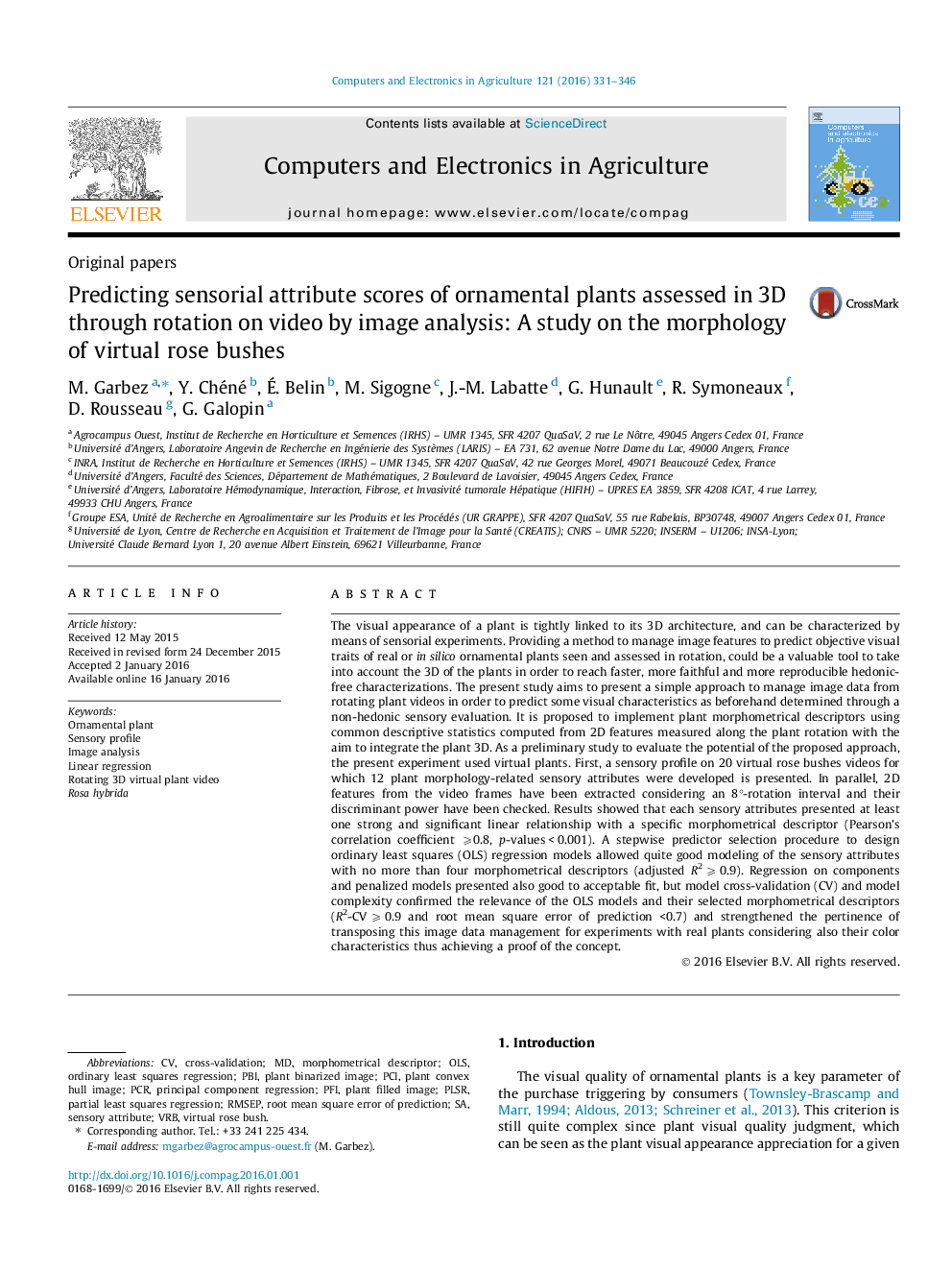| Article ID | Journal | Published Year | Pages | File Type |
|---|---|---|---|---|
| 84014 | Computers and Electronics in Agriculture | 2016 | 16 Pages |
•A method to construct morphometrical descriptors from rotating plants is proposed.•Rotating virtual plants stimuli are appropriate for sensory profile experiments.•Sensory attributes and morphometrical descriptors present strong relationships.•Sensory attributes are efficiently predicted with few morphometrical descriptors.
The visual appearance of a plant is tightly linked to its 3D architecture, and can be characterized by means of sensorial experiments. Providing a method to manage image features to predict objective visual traits of real or in silico ornamental plants seen and assessed in rotation, could be a valuable tool to take into account the 3D of the plants in order to reach faster, more faithful and more reproducible hedonic-free characterizations. The present study aims to present a simple approach to manage image data from rotating plant videos in order to predict some visual characteristics as beforehand determined through a non-hedonic sensory evaluation. It is proposed to implement plant morphometrical descriptors using common descriptive statistics computed from 2D features measured along the plant rotation with the aim to integrate the plant 3D. As a preliminary study to evaluate the potential of the proposed approach, the present experiment used virtual plants. First, a sensory profile on 20 virtual rose bushes videos for which 12 plant morphology-related sensory attributes were developed is presented. In parallel, 2D features from the video frames have been extracted considering an 8°-rotation interval and their discriminant power have been checked. Results showed that each sensory attributes presented at least one strong and significant linear relationship with a specific morphometrical descriptor (Pearson’s correlation coefficient ⩾0.8, p-values < 0.001). A stepwise predictor selection procedure to design ordinary least squares (OLS) regression models allowed quite good modeling of the sensory attributes with no more than four morphometrical descriptors (adjusted R2 ⩾ 0.9). Regression on components and penalized models presented also good to acceptable fit, but model cross-validation (CV) and model complexity confirmed the relevance of the OLS models and their selected morphometrical descriptors (R2-CV ⩾ 0.9 and root mean square error of prediction <0.7) and strengthened the pertinence of transposing this image data management for experiments with real plants considering also their color characteristics thus achieving a proof of the concept.
